Swayne Field was located at the intersection of Monroe Street and Detroit Avenue in Toledo, Ohio. The ballpark opened on July 3, 1909, as the home of the American Association Toledo Mud Hens. The ballpark was named after Noah Swayne, Jr., who purchased the land for the ballpark and leased it to the team.
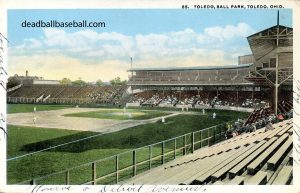
Toledo’s American Association franchise played at Swayne Field through the 1955 season, with the exception of 1914 and 1915 when the team relocated to Cleveland and played at League Park to keep the Federal League from establishing a team in that city. As a replacement for the city baseball fans, the Southern Michigan League Mud Hens played at Swayne Field in 1914.
Toledo’s team was known primarily as the Mud Hens, although the team changed names twice, beginning with the Toledo Iron Men from 1916 to 1918 and the Toledo Sox from 1952 to 1955. Many great ballplayers passed through future Hall of Famer Casey Stengel who managed the team from 1926 to 1931.
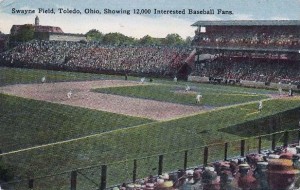
Negro League baseball was played at Swayne Field, including the Negro National League Toledo Tigers in 1923, the Negro American League Toledo Crawfords in 1939 (featuring future Hall of Famer Oscar Charleston), and the United States League Toledo Cubs in 1945 (featuring future Hall of Famer Norman “Turkey” Stearnes). Swayne Field also was the site of many Negro League exhibition games over the years.
Professional Football also was played at Swayne Field. The Ohio League Toledo Maroons played at Swayne Field from 1909 to 1921 and the National Football League Toledo Maroons played there in 1923.

The ballpark was demolished in 1956 to make way for Swayne Field Shopping Center and what was then the largest Kroger store store in the country.
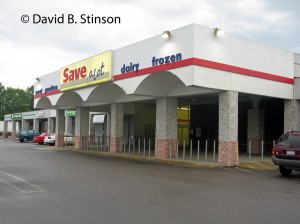
A McDonald’s Restaurant sits in the former site of right field, just as a different McDonald’s sits in the former site of left field at Baltimore’s old American League Park. St. Ann’s Catholic Church is visible behind Swayne Field’s former right field corner, just as a different St. Ann’s Catholic Church is visible a few blocks from Baltimore’s old American League Park.
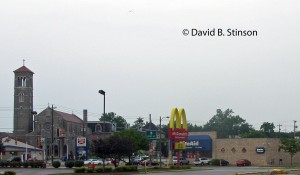
The building that comprises the Swayne Field Shopping Center is located in what was once left and center field.
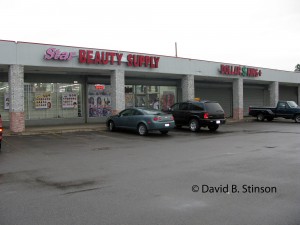
Home plate and the grandstand behind home plate was located mid block on Monroe Street between Detroit Street and former Toledo Terminal Railroad tracks. A Sherwin-Williams store now marks the spot.
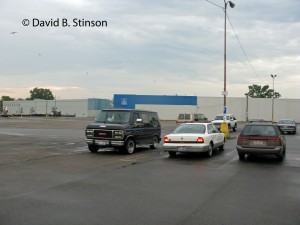
First base ran parallel to Monroe Street. Some of the buildings dating to the time of Swayne Field remain near the site on Monroe Street.
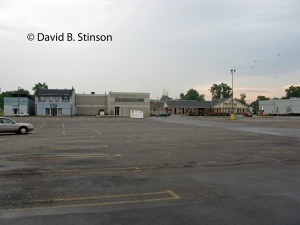
Most remarkable, however, is that a portion of Swayne Field’s original concrete wall remains at the site.

The concrete wall once enclosed the the ballpark along Detroit Street (the first base foul line) around to Council Street (left and center field).
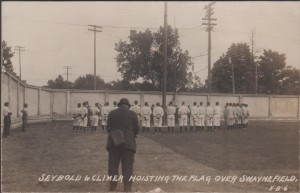
The portion of the wall that remains today was once part of the left center field wall, and is located behind the shopping center, parallel to Council Street.
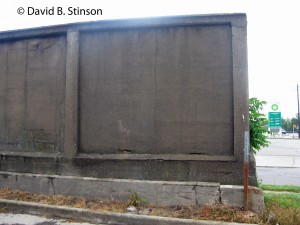
The structure is over one hundred years old and in desperate need of repair.

How historically significant is the Swayne Field wall? As an actual ballpark relic, the Swayne Field wall is one year older than both Rickwood Field, the oldest former professional ballpark still standing, which opened in August 1910, and the 1910 renovation of League Park in Cleveland (League Park’s ticket house may date to 1909). The wall is three years older than Fenway Park, the oldest Major League ballpark still standing, which opened in 1912. The wall is five years older than the somewhat famous Washington Park Wall, a relic of Brooklyn’s Federal League Tip Tops ballpark, which was constructed in 1914, and Wrigley Field, which opened in 1914 as Weeghman Park, home for the Federal League Chicago Whales. The wall is six years older both Bosse Field, the third oldest professional ballpark still in continuous use, built in 1915, and the remnants of Braves Field, which opened in 1915. Athough Forbes Field was constructed in 1909, the same year as Swayne Field, the outfield wall that remains at the Forbes Field site was built in 1946.
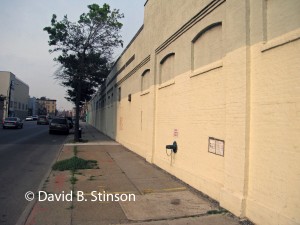
All that is left of the Swayne Field wall closest to the left field corner are some of the concrete pillars.
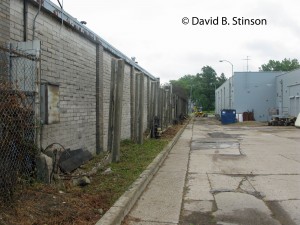
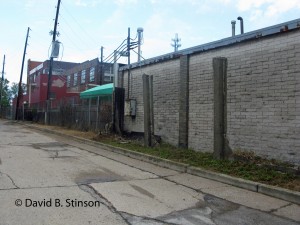
Out beyond what was once the left field corner is a brick building that dates back to the time of Swayne Field and is now Burkett Restaurant Supply.

After Swayne Field was demolished, Toledo was without a minor league affiliate from 1956 to 1964. In 1965, the Mud Hens returned to the area, playing in what was then called Lucas County Stadium, a converted race track at the Lucas County Fairgrounds, ten miles southwest of Swayne Field in Maumee, Ohio. Lucas County Stadium was subsequently renamed Ned Skeldon Stadium after the person who helped bring minor league baseball back to the Toledo area.
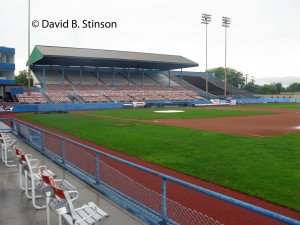
In 2003 the Toledo Mud Hens left Ned Skeldon Stadium and returned to downtown Toledo, playing in brand new Fifth Third Field located just two miles southeast of the Swayne Field site.

On the Fifth Third Field club level is a display dedicated to the memory of Swayne Field.
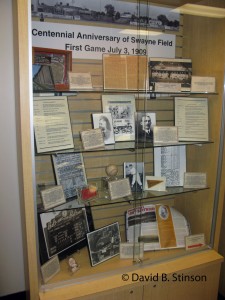
Included in the display is a piece of the original Swayne Field Wall.
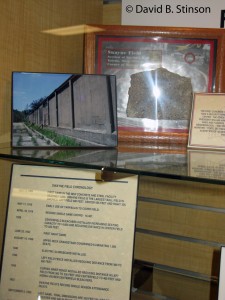
If you are a fan of the game and the history of baseball, a stop at Swayne Field Shopping Center is a must, if for no other reason than to see a ballpark relic that is over one hundred years old. There are not many professional baseball stadium structures in the United States older than the Swayne Field wall. The portion that remains is located at the corner of Detroit Street and Council Street.
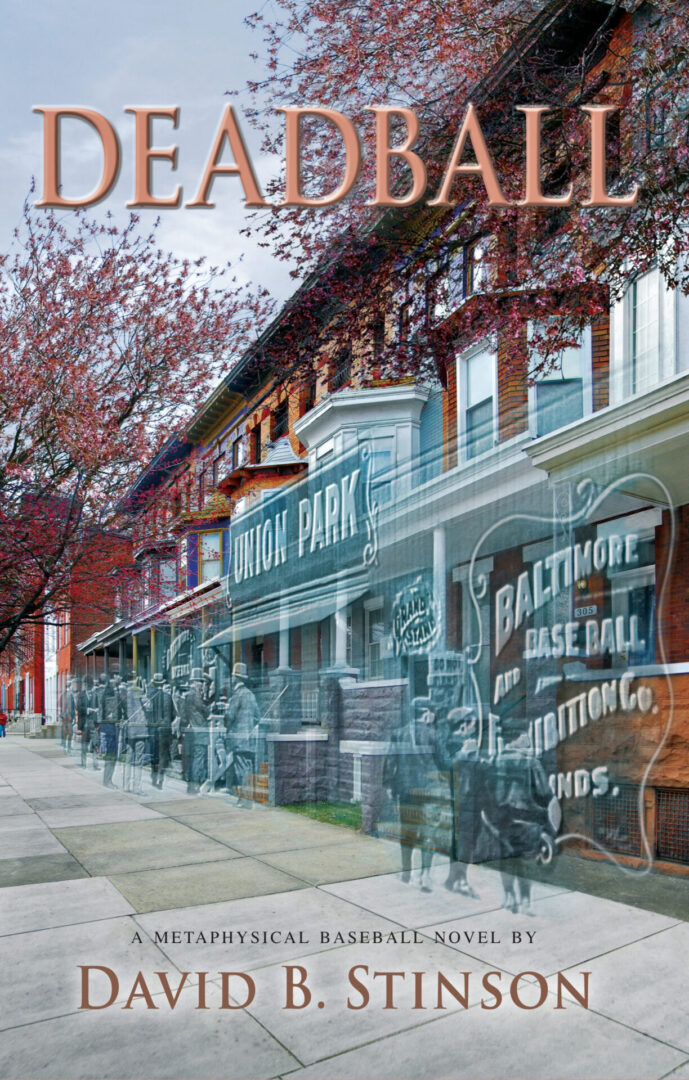

[…] 1955, when the Toledo Mud Hens departed Swayne Field and moved to Wichita, Kansas, Toledo was left without a minor league team. Ned Skeldon, who […]